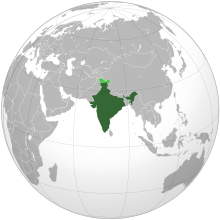We’ve got our Indian visas. All the prelim medical tests are done on our end. We’ve selected an egg donor for our child and we’ve wired the initial payments (upward of $8,000) to our clinic in India.
Now all that’s left to do is select our surrogate, visit our clinic in India, and make our baby.
 We’ve worked out the dates for that big initial visit with both our clinic and employers. (Drum roll, please!) Matt and I will be traveling to Mumbai on Friday, July 20, and returning to New York on Thursday, July 26.
We’ve worked out the dates for that big initial visit with both our clinic and employers. (Drum roll, please!) Matt and I will be traveling to Mumbai on Friday, July 20, and returning to New York on Thursday, July 26.
That means, of course, that three weeks from today we’ll be getting on a plane and heading to India. It feels almost surreal how quickly everything is happening, but we’re both very excited. It’s hard to be patient. We’d go tomorrow if we could.
Alas, just a few more weeks to wait.
Ordinarily we wouldn’t be telling people so much about this process, as in vitro fertilization, and pregnancy in general, can be a delicate, fickle undertaking. Consider the data, which tells us there’s a 60% chance of pregnancy from a first round of IVF. If there isn’t a successful pregnancy the first time, Matt will have left a second genetic sample to start the in vitro process again two months after the first go-round (which also means additional cost). There’s a 90% chance of success by the second time around. So, nine out of ten times, by the second try, you’re pregnant (in the case of gestational surrogacy).
 This is the part, of course, where we beg you to cross all your fingers and toes (and/or send good thoughts, prayers, light a candle, or whatever it is you like to do in a situation like this) for a successful first shot.
This is the part, of course, where we beg you to cross all your fingers and toes (and/or send good thoughts, prayers, light a candle, or whatever it is you like to do in a situation like this) for a successful first shot.
It takes two weeks for the clinic to confirm our pregnancy after that initial visit, so we’ll know the result by mid-August. An e-mail from our clinic will serve as our equivalent of peeing on a little plastic stick and looking for a “plus” or “minus.” We’ll be on our honeymoon in Spain at that point, which would be a really wonderful time to get some good news.
If not, we’ll deal; we’re very optimistic, but also realistic. You have to be with things like this.
With IVF, and pregnancies in general, the oft-accepted rule is usually to not tell anyone about the status of the pregnancy until the first trimester of pregnancy is finished (which is about thirteen weeks). It’s most common for miscarriages to occur in that time period, for example, so couples often wait until after that to make announcements to friends and family.
In our case, however, we’ll be sharing each step of the process as we go along. We learned so much valuable information from a few same-sex couples who wrote terrific gestational surrogacy blogs, detailing each step of their journey, from bumps to successes, that we feel it’s only fair to do the same ourselves.
In the meantime, we’ll be counting down the days until we leave for India.
Fatherhood, or at least a fertilized egg latched to a uterine wall and rapidly dividing, may be just around the corner.
–Josh

